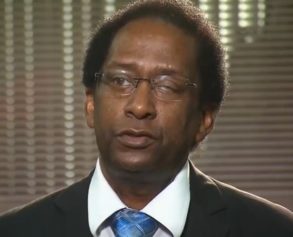A time traveler from the 1950s might look at today’s headlines and ask if race relations have improved over the last 60 years. A Black college student who attended a Donald Trump rally in Louisville, Kentucky, was physically assaulted. And a Texas man recently shot out the windows of a Black woman running for sheriff of Jefferson County. These stories could have been pulled from the 1950s.
The headlines are filled with news of Donald Trump, a race-baiting demagogue running for president. Trump’s campaign is much like the runs of Strom Thurmond and George Wallace, Dixiecrats who appealed to white America’s racial fears.
However, Trump’s presidential campaign, which has also seen Latinos and Indian Americans ejected from rallies, is the tip of the spear when it comes to racial animosity. This has been building since 2008, when President Barack Obama was elected.
Although Obama’s election was met with celebration in some parts of the country, stories about people carrying out acts of violence because they were upset that a Black man was occupying the White House seemed to get buried by the media. But several incidents happened:
- According to a 2009 CNN article, Don Black, founder of white supremacist website Stormfront, said more than 2,000 people joined his site the day after Obama’s election.
- Two weeks before Obama’s election, police foiled an assassination plot by skinheads.
- CNN also said that police reported a Boston man targeted minorities after Obama’s inauguration.
According to Black, Obama’s election forced people to take action.
“People who had been a little more complacent and kind of upset became more motivated to do something,” he said.
However, that was just the beginning. Obama was barely in office before we saw the rise of the Tea Party, which represented a lot of white fears. Although Tea Party activists denied the movement was racist, rallies featured images of Obama dressed as an African witch doctor and signs referring to white slavery and Obama as a monkey.

A tea party rally.
One of the frequent chants at Tea Party rallies was, “We want to take our country back,” which was a subtle reference to white people’s perceived loss of power. Ironically, “taking the country back” is also a message Trump has incorporated into his campaign. Trump has also harnessed white fears of the nation’s changing demographic by promising to crack down on illegal immigration from Mexico.
At this stage, Trump’s campaign barely hides its ties to the white supremacy movement. White supremacist websites, such as Black’s Stormfront, have reported huge jumps in traffic because of Trump. Last week, Trump conducted a disastrous interview with CNN’s Jake Tapper, where he claimed not to know anything about white supremacists or former grand wizard David Duke. (However, after he was roundly condemned in the media, and by leading Republicans, Trump condemned the Klan.)
But this week, his son Donald Trump Jr., gave an interview on The Political Cesspool, a radio show hosted by white nationalist James Edwards. Although Edwards calls himself a “paleoconservative,” the show’s website says it is pro-white, supports reviving the white birth rate and blames America’s declining fortunes on “Third World immigration.” According to Media Matters, Edwards has also said that Martin Luther King Jr.’s “dream is our nightmare,” “interracial sex is white genocide,” and “slavery is the greatest thing that ever happened to” Black people.
Edwards, who has hosted former Republican presidential candidate Pat Buchanan on his show, also brags about broadcasting from a Trump rally, which is not surprising because they share many of the same beliefs.
In an article on Truthdig, author and former New York Times journalist Chris Hedges said Trump is popular because many Americans believe his candor allows them to say whatever is on their minds, no matter how offensive it is. Many of his supporters say they like Trump because he is not politically correct.
“These Americans want a kind of freedom — a freedom to hate,” said Hedges. “They want the freedom to use words like ‘n***er,’ ‘kike,’ ‘spic,’ ‘chink,’ ‘raghead’ and ‘fag.’ They want the freedom to have enemies, to physically assault Muslims, undocumented workers, African-Americans, homosexuals and anyone who dares criticize their cryptofascism. They want the freedom to celebrate historical movements and figures that the college-educated elites condemn, including the Ku Klux Klan and the Confederacy.”



